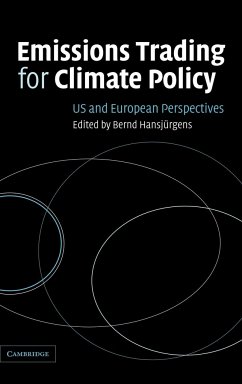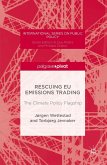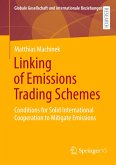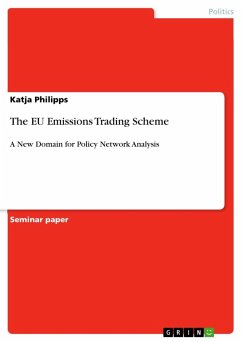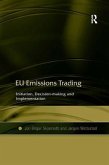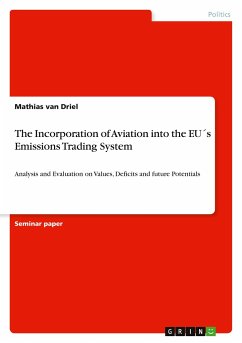Short description/annotation
One of the first systematic comparisons of US and European experiences of emissions trading.
Main description
The 1997 Kyoto Conference introduced emissions trading as a new policy instrument for climate protection. Bringing together scholars in the fields of economics, political science and law, this book provides a description, analysis and evaluation of different aspects of emissions trading as an instrument to control greenhouse gases. The authors analyse theoretical aspects of regulatory instruments for climate policy, provide an overview of US experience with market-based instruments, draw lessons from existing trading schemes for the control of greenhouse gases, and discuss options for emissions trading in climate policy. They also highlight the background of climate policy and instrument choice in the US and Europe and of the emerging new systems in Europe, particularly the new EU's directive for a CO2 emissions trading system.
Table of contents:
Figures and tables; Preface and acknowledgement; Contributing authors; 1. Introduction Bernd Hansjürgens; Part I. Regulatory Instruments for Climate Policy - Theoretical Aspects: 2. Designing instruments for climate policy Thomas Sterner and Henrik Hammar; 3. Technical innovation and design choices for emissions trading and other climate policies Carolyn Fischer; 4. A note on incentives to adopt new abatement technology and US-European regulatory cultures Reimund Schwarze; Part II. The US Approach to Pollution Control - Lessons for Climate Policy: 5. Implications of the American experience with market-based environmental strategies for future climate policy Robert N. Stavins; 6. US experience with emissions trading: lessons for CO2 emissions trading A. Denny Ellerman; 7. Climate change policy from the US and the role of intensity targets Charles D. Kolstad; 8. Design issues of a domestic carbon emissions trading in the US Richard D. Morgenstern; Part III. European Policies to Control Greenhouse Gases - The EU Directorate on Emissions Trading: 9. Regulation or coordination: European climate policy between Scylla and Charybdis Mikael Skou Andersen; 10. Lobbyism and CO2 trade in the EU Gert Tinggaard Svendsen; 11. Greenhouse gas emissions trading in the European Union: building the world's largest cap-and-trade scheme Peter Zapfel; 12. Legal aspects of the European emissions trading scheme Michael Rodi; 13. Emission trading schemes in Europe: linking the EU emissions trading with national programs Sven Bode; 14. Concluding observations Bernd Hansjürgens; Index.
One of the first systematic comparisons of US and European experiences of emissions trading.
Main description
The 1997 Kyoto Conference introduced emissions trading as a new policy instrument for climate protection. Bringing together scholars in the fields of economics, political science and law, this book provides a description, analysis and evaluation of different aspects of emissions trading as an instrument to control greenhouse gases. The authors analyse theoretical aspects of regulatory instruments for climate policy, provide an overview of US experience with market-based instruments, draw lessons from existing trading schemes for the control of greenhouse gases, and discuss options for emissions trading in climate policy. They also highlight the background of climate policy and instrument choice in the US and Europe and of the emerging new systems in Europe, particularly the new EU's directive for a CO2 emissions trading system.
Table of contents:
Figures and tables; Preface and acknowledgement; Contributing authors; 1. Introduction Bernd Hansjürgens; Part I. Regulatory Instruments for Climate Policy - Theoretical Aspects: 2. Designing instruments for climate policy Thomas Sterner and Henrik Hammar; 3. Technical innovation and design choices for emissions trading and other climate policies Carolyn Fischer; 4. A note on incentives to adopt new abatement technology and US-European regulatory cultures Reimund Schwarze; Part II. The US Approach to Pollution Control - Lessons for Climate Policy: 5. Implications of the American experience with market-based environmental strategies for future climate policy Robert N. Stavins; 6. US experience with emissions trading: lessons for CO2 emissions trading A. Denny Ellerman; 7. Climate change policy from the US and the role of intensity targets Charles D. Kolstad; 8. Design issues of a domestic carbon emissions trading in the US Richard D. Morgenstern; Part III. European Policies to Control Greenhouse Gases - The EU Directorate on Emissions Trading: 9. Regulation or coordination: European climate policy between Scylla and Charybdis Mikael Skou Andersen; 10. Lobbyism and CO2 trade in the EU Gert Tinggaard Svendsen; 11. Greenhouse gas emissions trading in the European Union: building the world's largest cap-and-trade scheme Peter Zapfel; 12. Legal aspects of the European emissions trading scheme Michael Rodi; 13. Emission trading schemes in Europe: linking the EU emissions trading with national programs Sven Bode; 14. Concluding observations Bernd Hansjürgens; Index.

